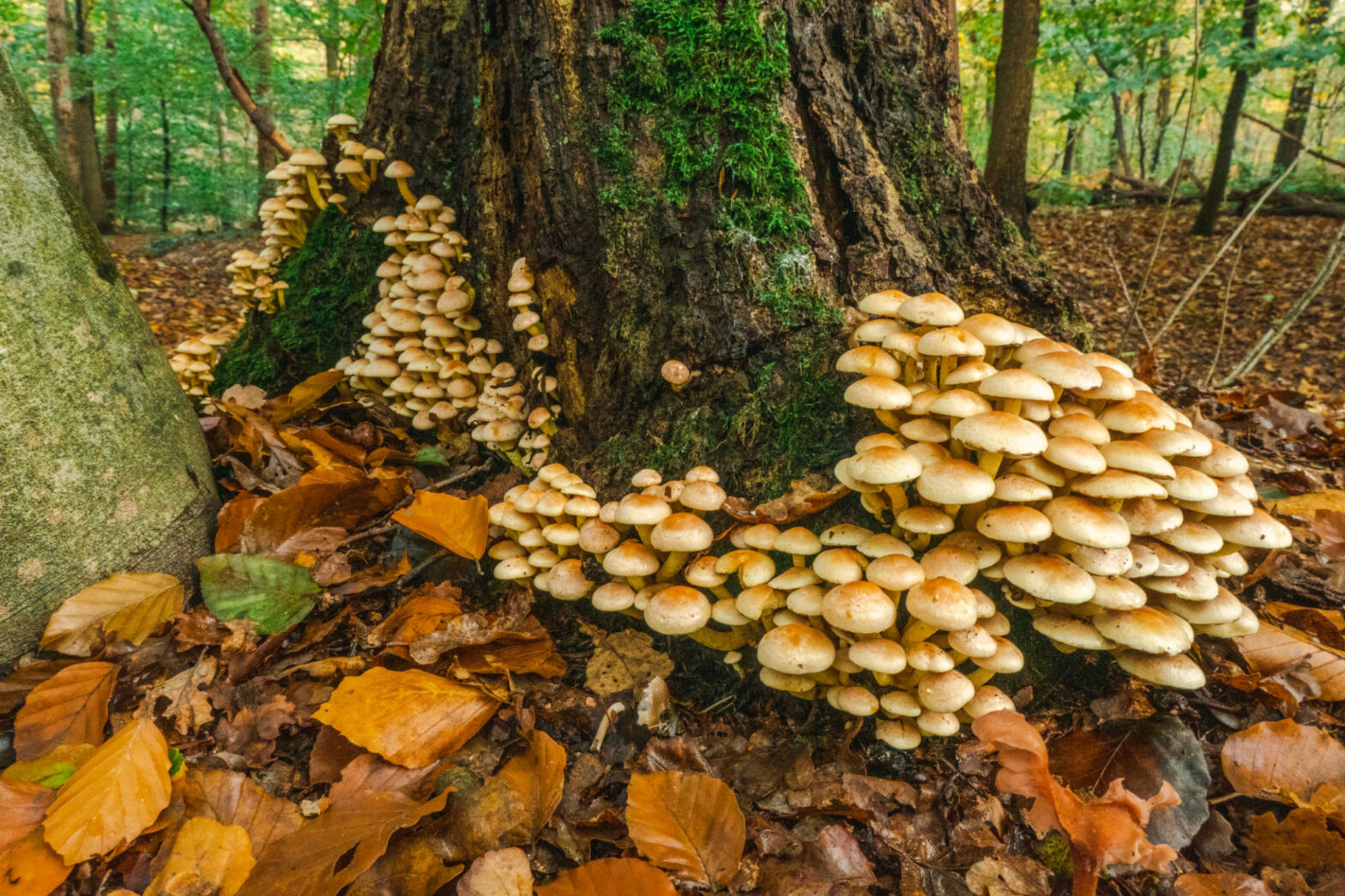Different Kinds of Fascinating And Colorful Mushrooms Around The World

Colorful mushrooms do not come from plants or animals. They are components of a group of microorganisms such as yeasts, molds, and many more. They play an essential role in the decomposition of organic matter and do not participate in nutrient cycling.
Most Fascinating-Looking And Colorful Mushrooms In The World
Mushrooms have more than 12,000 name species on forest floors, decaying tree trunks, and dung piles. Half of the mushrooms around the world are inedible but harmless. 1/4 are edible but not incredible, and 20% are cases of sickness. 4% are tasty to excellent, and 1% are poisonous to the human body. They are 90% water and grow above the ground or their food source.
Mushrooms are used for medicinal purposes and serve as food across the globe. It was declared as food for royalty in Egypt for centuries and banned for commoners. It is also meat in the vegetarian world and is gradually used extensively in cooking many countries’ cuisines. These include China, Korea, Europe, Japan, Italy, France, and many more.
Edible mushrooms provide essential nutrients. They serve as a leavening agent for bread. They are also included in the fermentation process of wine, beer, and soy sauce. Mushrooms are also applied when producing biological pesticides. These help in controlling weeds, plant diseases, and insect pests.
A Few Types of Mushrooms That Are Found Around Us
Kikurage Mushrooms
Kikurage mushrooms are brown and translucent species popular in soup ingredients and Asian recipes. It has the shape of an ear where it gets its name and a smooth surface on both sides. Kikurage is a flavoring agent in Japanese and Chinese ramen. It can be eaten cold when added to a salad or cut into matchsticks. But they are not edible when raw and take a long time to cook but easily absorb the flavors in the dish.
Black Trumpet Mushrooms
Black trumpet mushrooms are one of the most delicious, edible, and mouth-watering wild mushrooms. They contain a smoky-rich flavor and a pleasant fruit-like aroma. Their delicate texture makes them suitable for garnish in lightly flavored dishes.
Unfortunately, Black trumpet mushrooms are challenging to cultivate domestically and difficult to find in the forest. This is because they camouflage with their surroundings, making them look like little black holes on the forest floor.
Black Trumpet mushrooms grow on damp, mossy forest floors. They are not poisonous and are unique in color. These make them great for new mushroom hunters.
Fly Amanita
Fly Amanita is a psychoactive mushroom that attracts and kills house flies. It has some of the most toxic mushrooms, with more than 400 species. Fly Amanita grows all year round in soils near trees in glossy red. Covered in irregular white spots that match its white stem.
It is native throughout the temperate region of the Northern and southern hemispheres. Although considered poisonous, there is no record of human deaths from its consumption. Europeans, Asians, and North Americans often eat amanita after parboiling.
White Button Mushrooms
White button mushrooms are one of the most cultivated mushrooms in the world. They do not have an intense flavor and are tender when tasted. 90% of the white button mushrooms are cultivated in the United States and are found in fields.
White mushrooms have many health benefits. They have protein, potassium, selenium, amino acids, and a natural non-animal source of vitamin D2. Also, they help in absorbing calcium in the body. These keep the bones strong while improving insulin resistance.
White button mushrooms are a good option for vegetarians and can be eaten raw or cooked, depending on your preference. They are low in calories and sugar, making them perfect for soups, salads, and pizzas. Their mild taste and cancer-fighting properties make chefs add them to many culinary dishes.
The Netted Herodotus
The netted Herodotus is one of the most beautiful tree mushrooms in Britain. It blooms year-round except in extreme cold and does not grow in soil. It is found on rotting trees and does best in forests. Netted Herodotus has a wrinkled cap, a vibrant shade of orange-pink, and varying gill lengths beneath its cap. It grows in the Eastern half of North America, Europe, and most of Asia. This gorgeous mushroom is exceedingly difficult to find in many European countries, making it on the list of endangered species. It is considered regionally extinct Baltic, and Hungary makes it illegal to pick them to protect the species.
Laccaria Amethystina
Laccaria amethystina is a beautiful purple mushroom that grows among dark damp leaf litter, woodlands, and mossy soil. Widespread in Britain and Ireland and found in mainland Europe, Asia, and North America. It is also found around coniferous and deciduous forests. They have a beautiful cap and stand out, making them easy to find. But it turns brown as it ages, starting with the stem. According to The Wildlife Trusts, Laccaria amethystina is an edible mushroom. But it is often mistaken for poisonous colorful mushrooms with a similar appearance.
Wrapping up
Colorful mushrooms are widespread, and they can be poisonous or edible. The edible mushrooms do not harm the human body and provide nutrients that facilitate growth and development. These mushrooms on trees make up the vast majority of mushrooms in the world. Poisonous mushrooms as the name suggests are dangerous to human health. Some cause mild gastrointestinal discomfort, stomach disorder, death, and many more. Also, these mushrooms can look very similar to the edible varieties. Therefore, identify wild-harvested mushrooms correctly before adding them to your favorite meal.













